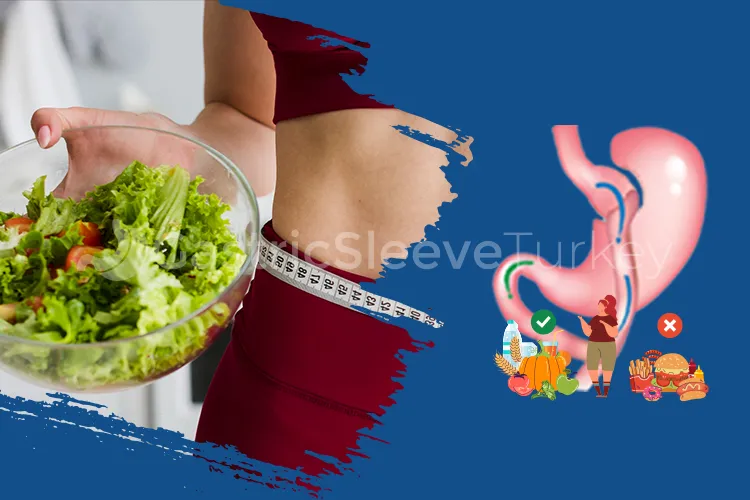
What Can I Eat After Gastric Sleeve? This is a common question for those who have undergone this weight loss procedure. Gastric sleeve surgery significantly reduces the size of the stomach, limiting food intake and requiring a strict diet plan for optimal recovery and long-term success. Following a structured eating plan is crucial to prevent complications and ensure proper nutrition. In the first few weeks, patients must transition from liquid to soft and then solid foods gradually. Over time, they can introduce more variety while avoiding certain foods that may cause discomfort. Understanding the appropriate diet post-surgery can help in maintaining weight loss and preventing nutritional deficiencies.








What Is Gastric Sleeve?
Gastric sleeve surgery, also known as sleeve gastrectomy, is a bariatric procedure that removes about 75-80% of the stomach. This results in a smaller, sleeve-shaped stomach that holds less food, leading to reduced calorie intake and long-term weight loss. The procedure is irreversible and requires permanent dietary adjustments to maintain results and overall health.
What Can I Eat 2 Weeks After Gastric Sleeve?
Two weeks after gastric sleeve surgery, patients are typically in the pureed food phase. This means consuming foods that are soft and easy to digest, such as:
Blended soups without chunks
Greek yogurt
Mashed potatoes (without butter or cream)
Scrambled eggs
Cottage cheese
Sugar-free pudding or gelatin
During this phase, it is crucial to eat small portions, chew thoroughly, and avoid high-fat or high-sugar foods.
Gastric Sleeve Eating Plan
A post-gastric sleeve eating plan is structured into different phases:
Liquid Diet (Days 1-7): Clear broths, sugar-free juices, and protein shakes.
Pureed Foods (Weeks 2-3): Blended or soft foods such as mashed vegetables, yogurt, and eggs.
Soft Foods (Weeks 4-5): Ground meats, soft fruits, and cooked vegetables.
Solid Foods (Week 6 and beyond): Gradual introduction of lean proteins, whole grains, and healthy fats.
Can I Eat Steak After Gastric Sleeve?
Red meat, especially steak, is difficult to digest after gastric sleeve surgery. Patients should wait at least 3-6 months before trying steak, and even then, it should be lean, tender, and chewed thoroughly.
Best Foods To Eat After Gastric Sleeve
The best foods post-surgery should be rich in nutrients and easy to digest, including:
Lean proteins (chicken, fish, tofu)
Cooked vegetables
Low-fat dairy products
Soft fruits (bananas, peaches)
Whole grains in small portions
Burping After Eating Gastric Sleeve
Burping is common after eating due to the smaller stomach size and slower digestion. Eating too quickly, drinking carbonated beverages, or consuming large portions can contribute to excessive burping.
Can I Eat Banana After Gastric Sleeve?
Yes, bananas are soft and easy to digest. However, they should be introduced in small portions and chewed thoroughly.
Can I Eat Beans After Gastric Sleeve?
Beans are a great source of fiber and protein but can cause bloating. They should be introduced gradually and well-cooked to aid digestion.
Can I Eat Bread After Gastric Sleeve?
Bread can be difficult to digest and may cause discomfort. Whole-grain or toasted bread in small amounts is preferable.
How Much Food Can You Eat With a Gastric Sleeve?
Portion sizes are significantly reduced post-surgery. Initially, patients can only consume about 1/4 to 1/2 cup per meal, gradually increasing to 1 cup over time.
Can I Eat Chips After Gastric Sleeve?
Chips are high in fat and low in nutrients, making them an unhealthy choice post-surgery. They should be avoided to prevent weight regain.
Can I Eat Chocolate After Gastric Sleeve?
Small amounts of dark chocolate may be tolerated, but sugary and high-fat chocolates should be avoided as they can lead to dumping syndrome.



